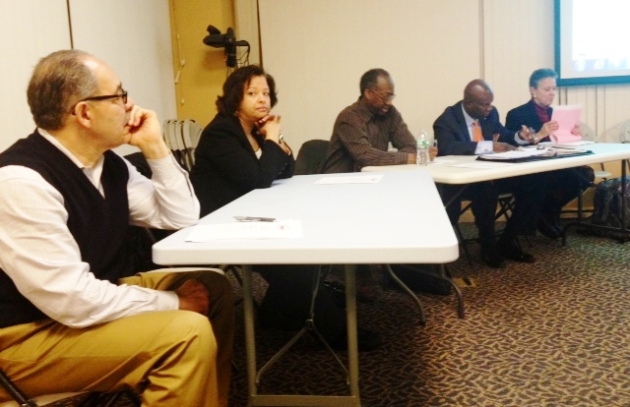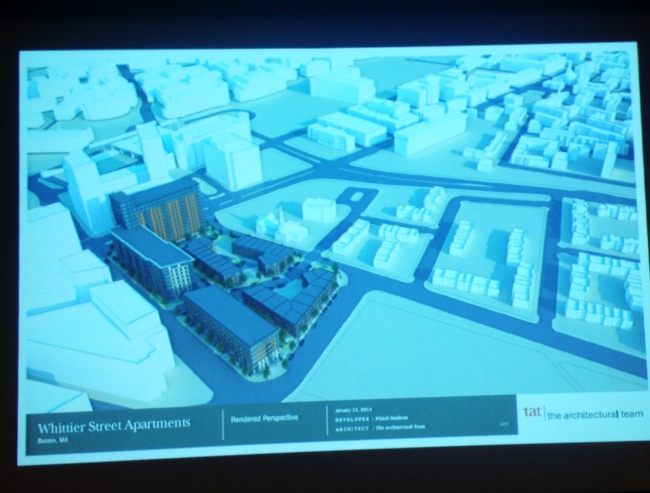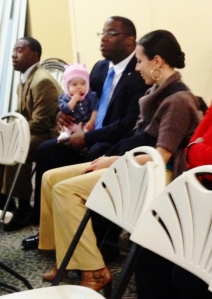^ a good meal but not much movie, despite the best acting efforts of Kate Winslet, Gattlin Griffith, and Jason Brolin in Jason Reitman’s “Labor day”
—- —- —-
A good meal can solve a lot of things, and the leftovers too, mixed with canned goods from the pantry can sate as well, but not so much in Jason Reitman’s uneven romantic hash that’s chockfull of disparate parts, stock elements and daubs of cliche.
Reitman, who once served notice as a quirky indie director along the lines of Wes Anderson, with his acerbically big tobacco satire “Thank You for Smoking” (2005), held the line steadfast with “Juno” (2007) and “Up in the Air” (2009). Even “Young Adult” (2011) bore his droll punchy fingerprint, which is why “Labor Day” is such a puzzler, a change-up royale and by-the-numbers affair that lacks air, style or wit.
All of Reitman’s previous works were carefully hung on the framework of a situational dark comedy infused with varying degrees of romance. “Labor Day,” of all things, is a dark romance with a deep vein of crime drama to propel it. Perhaps Reitman saw the project as something new to challenge his skills, or maybe he simply couldn’t pass up the opportunity to work with Kate Winslet and Josh Brolin, two of film’s most complete and capable thespians of the moment.
Those two performers become the film’s saving grace. Brolin recently clocked a yeoman effort that gave legs to Spike Lee’s remake of Chan-wook Park’s “Old Boy.” He delivers this time as well, assuredly with simmer, compassion and just the right amount of intimidation as Frank, an escaped con who, at a thrift store in a deep New Hampshire enclave, takes a woman and her son captive. It’s the mid 80s, so Frank doesn’t have to contend with a texting adolescent to give him away or a viral internet trend to alert folks of his wanted status.
TV news flashes do provide a bit of an obstacle, but they’re also a means to inform viewers that Frank is serving eighteen years for murder–the details and complicated nuance of which are meted out sparsely by intermingled flashbacks that infuriate as much as they enlighten. Frank gains his freedom by jumping out a second story window of a hospital following an appendectomy. As a result he’s got a weeping wound in his side, while Adele (Winslet), the woman he takes captive, has a hole in her heart, lazing around her house, too inert to do anything. Her twelve-year-old son Henry (an effective Gattlin Griffith) pretty much sees after himself, but the sleepy old Victorian they share, as evidenced by the overgrown lawn and general state of disrepair, isn’t so lucky.
So there you have it, Frank’s physically damaged and Adele’s emotionally scarred (she had several miscarriages after Henry, became depressed and her marriage dissolved) and in that, the one can heal the other if the lurking police don’t intercede first. Following the carjacking, Frank ends up back at Adele’s house where holing up becomes hanging out. Besides fixing the front porch and dry wall, he proves pretty good in the kitchen, whipping up a tangy chili out of nothing, and pie? Boy can he bake a pie.
The film’s peach pie scene is one for the ages. Never before, not since “Ghost,” have hands on hands taken center stage with such inflamed hyperbole. In “Ghost,” it played to the texture of the film. Here, with such fine actors so debased, it feels soft-core cheesy and wrong. “Let’s put a roof on this house,” Frank growls as a trembling Adele fumbles with a pancake of thick dough. Reitman, who penned the script from Joyce Maynard’s novel, must have thought the scene smart and leaven with innuendo and metaphor, but as is, it has the sensory effect of chocolate mousse made from a package of stale Hersey Kisses.
Food becomes a reoccurring yet unbridled motif, and a point of bonding for Frank and Henry. Frank even teaches the boy to throw a baseball, and there’s a touching scene with the handicap kid from around the corner who’s allowed to play third base, but of course, the police loom and the film, as the title tells us, is limited to a long weekend.
The good news is that as the film sails into its final chapter, the pace, as well as Reitman’s directorial skills, pick up. Winslet too, who is so shell shocked and unkempt for so long, seizes the opportunity to blossom and fills the screen with her fully ripe, yet restrained sexuality. She and Brolin, like Frank in the kitchen, take what’s there, and with sweat, integrity and resolve, make the best of meager makings that have been dealt to them.
— Tom Meek / Meek at the Movies

















